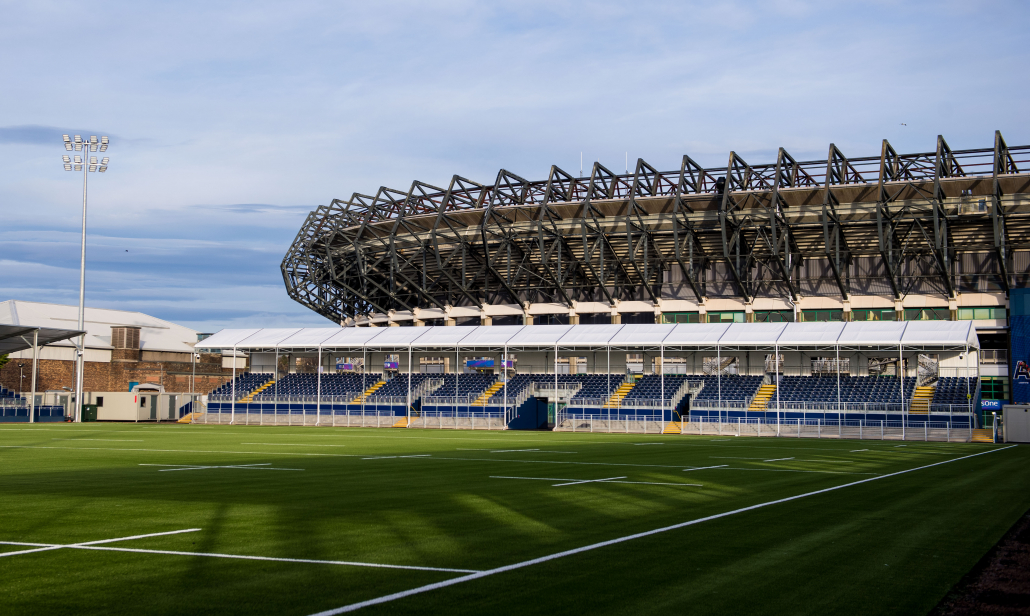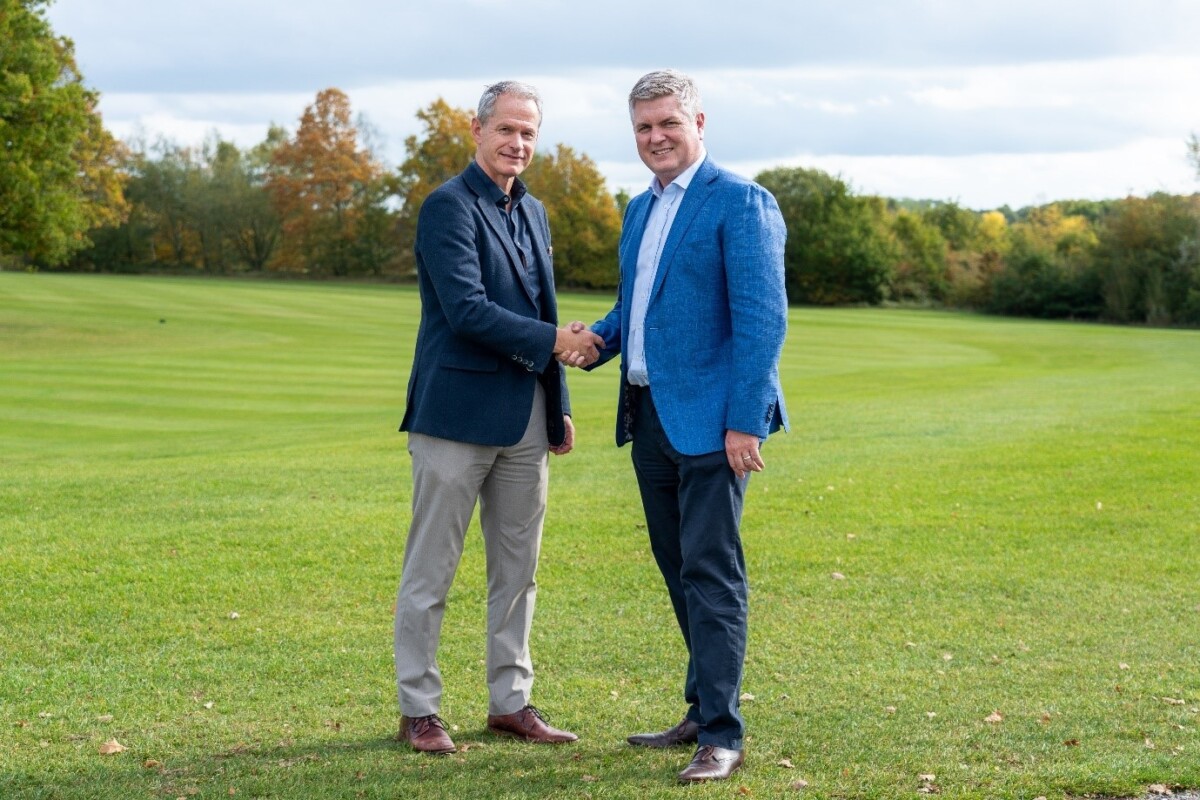In the shadow of BT Murrayfield: Edinburgh Rugby has a new home, a short pass away from the grandeur of BT Murrayfield. Scott MacCallum talks with Jim Dawson, head groundsman, to find out more.
As we enter a new year and say “Good riddance” to 2020, we can reflect on what has been an extraordinary difficult time for us all. One sector which has had more challenges to cope with than most is that of elite sport, where competition has continued but without crowds and all the related revenue streams that huge numbers of supporters generate.

In the shadow of BT Murrayfield
One of those bodies was the Scottish Rugby Union, but throughout everything Edinburgh Rugby’s new home was being constructed.
Just outside the main BT Murrayfield stadium the new stadium was conceived to provide a permanent home for Edinburgh in a more intimate environment of a 7,800-seater stadium.
That latter fact is a little ironic given that Scotland, and every other northern hemisphere national team, have been busting a gut in front of empty seats since the autumn. But there is no doubt the ability to provide that 16th man is made more easy in a compact arena.
One man how has watched its development closely over its various developmental stages is Head Groundsman, Jim Dawson.
“The stadium is more or less complete. The stands are in, the carpet is in and the posts are going in as we speak,” said Jim, as we chatted towards the end of November and, by the time you read this, the ground would almost certainly have been Christened.
“The pitch is exactly the same as the one we have a Scotstoun (Home of Scotland’s other pro team Glasgow Warriors) which has been down four or five years and which has been brilliant,” said Jim, who is in charge of both the BT Murrayfield and Scotstoun surfaces.
The new pitch is a Greenfields MX Elite. Pile Height: 60mm; Total thickness: 62 mm; Number of tufts per square metre: 4,750; Number of filaments per square metre: 114,000; Roll Width: 400 cm; Colour Fastness: Xenon test: blue-scale more than 7, grey-scale more than 4.

In the shadow of BT Murrayfield
“Paddy (Ferrie) won the Best Managed Artificial Surface of the Year at the 2017/18 IOG Awards for the pitch, and the work he does is second to none. He does an absolutely fantastic job in the way he maintains the carpet and we will just incorporate the practices he carries out at the new ground.”
With an artificial training pitch already at BT Murrayfield, Jim doesn’t need to add to his machinery inventory to cope with the new pitch.
“We have the brushes we need and the Campey Unirake, while the pitch does come with a one year warranty from Malcolm’s so they will be coming in and do whatever needs to be done for the first 12 months.
“We will carry on with the same testing that Paddy does at Scotstoun, measuring the depth of rubber crumb, and using the Clegg Hammer to ensure that it always plays its best.”
While the new build adds to the variety of work for Jim and his team, it will also be a real change for Head Coach Richard Cockerill and his Edinburgh team.
“They have been used to playing on a top quality grass pitch and to go and train and play on an artificial every day will be a bit different for them.”
Throughout the pandemic the pitch will be fully disinfected every week. Previously it had been once every six weeks.
“We are all really looking forward to taking the new pitch on board and it’s really good for Edinburgh to finally have their own home.
Back at the main BT Murrayfield Jim dealt with a full autumn schedule which this year incorporate the Nations Cup – all of which went on without crowds. Jim and his team had just prepared the pitch for the visit of France.
“Alex (Latto) and I watched the game from the disabled bay and, without crowd noise, you really do hear the big tackles going in as the players making their calls on the pitch,” said Jim, who also acknowledged he did notice how the lack of crowd meant that the build up of tension which Murrayfield normally sees just wasn’t there in the last five minutes of the game.
The BT Murrayfield DESSO pitch is now six years old but with loving and expert care, Jim reckons he can look forward to a 13-14 year lifespan.

In the shadow of BT Murrayfield
One of the main issues with which Jim has to deal, ironically enough for Scotland’s national stadium, is that it is in Scotland.
“We are the most northerly rugby stadium in Britain. The main difference between ourselves and Twickenham is daylight. As soon as the clocks change the grass wants to lie flat and shut itself down. With our stadium lighting and our undersoil heating we’re telling it not to go to sleep and to keep working which does stress it out.”
Jim and Deputy, Alex, review turf management practices regularly including their fertiliser programmes and to keep even more on top of things they are looking at reviewing more regularly.
“It has got to the stage that we are looking at things on a weekly, rather than a monthly, basis. Sometimes it’s just to tweak things a little but it might also mean leaving it alone for three or four days. And all groundsmen know, that to do nothing, is the hardest thing for us.”
Unlike the majority of the Scottish Rugby staff Jim was retained for most of the time during lockdown as, like so many in his position, he had to ensure the pitch continued to be cut, rather than left to its own devices.
But his workload didn’t stop there. “I got a couple of weeks in but was trying to spin so many plates and that fact that the weather had improved, I asked if Alex could come back too. He’d been climbing the walls. He’s a keen cyclist but had done virtually every route close to his home so he was delighted.
That helped me a lot, particularly with the back pitches and the many bankings that we have on the site.”
One of the jobs that they, and the Facilities Team – a total of seven – had to carry out, wouldn’t necessarily appear on any Job Description for a groundsman role.
“We had to turn every tap in the stadium on for five minutes to flush the system and prevent any outbreak of Legionella. We had a system where we had cable ties on them to keep them on otherwise it would have been a struggle,” said Jim with a degree of understatement.
All in a day’s work for Jim and his team at BT Murrayfield.


























